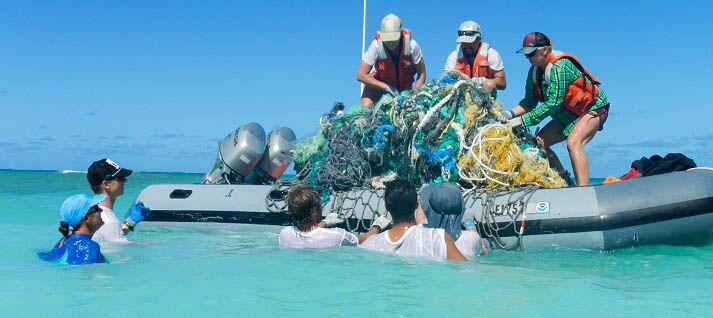The gulf plains and prairies ecoregion is under attack by the triple threat of drought, stagnant water and pollution.
The only Texas region bordering the Gulf of Mexico, bays stretch from the swamps of Louisiana down to Mexico. Border islands off the Texas coastline create small passageways that make it harder to flush water out into the ocean.
Robert Hetland, a professor of oceanography at Texas A&M University, said estuaries rely on a complex balance of salinity from ocean and freshwater mixing, but droughts along the coast threaten the ecosystem due to less fresh water inputs. Estuaries are bodies of water along the coast where the ocean water is noticeably diluted by fresh water from rivers, explained Hetland. Damage to the ecosystems happens when the salinity of the mixed water is thrown off balance, he said.
“For example, oysters prefer particular salinities,” Hetland said. “They don’t like it too fresh, and they don’t like it too salty.”
Estuary species like the oyster could suffer and new dominant species take over, he noted.
“It’s kind of like temperature,” Hetland explained. “If things are too hot or too cold, [some species] don’t like it.”
Chairman of the San Antonio Bay Partnership, Allan Berger, said the San Antonio Bay estuary is facing a drought. Garbage stagnating in the water compounds the problems facing the ecoregion about an hour north of Corpus Christi.
Solutions underway include providing fresh water sources for cranes and hauling away tons of garbage, Berger said, noting his organization works with the Coastal Bend Bays and Estuaries Program on common goals.
The bay has been starved of freshwater for a year. On Oct. 27, the U.S. Drought Monitor listed San Antonio Bay as “Abnormally Dry” continuing drought conditions from August 2019, broken only by a seven-week period from August through October 2020, according to archival maps.
“The combination of the changing climate and increasing water demand results in the bay being saltier,” Berger said.
The estuary habitat — including wildlife like whooping cranes and coyotes — are being starved of freshwater during the drought. SAPD has responded by converting two old wells and ranching ponds into fresh water sources each year, Berger said.
“What we’re trying to accomplish is to give the whooping crane a source of fresh water to drink,” Berger said. The endangered bird migrates to the area in the winter with only 483 individuals in the wild, according to the International Union for Conservation of Nature. It notes those numbers are trending upward.
Drought is a threat multiplier since a lack of fresh and ocean water exchange causes high salinity and results in critical imbalances in the estuary and thirsty wildlife, Hetland said. No steady flow of water to flush out an estuary means pollution can build up, Hetland added. Garbage is a physical representation of damage to an estuary’s environment that can stagnate in the water, he said.
“If you’ve got pollution or mucky water sitting there, the ecosystem is healthier usually when there is more flushing,” Hetland explained.
While there is no evidence the San Antonio Bay is becoming more polluted, there are signs it is getting cleaner as the SABP has taken the lead to remove consumer plastics from the bay, Berger said.
“We initiated a program this last September where we attracted 15 boats and crews to go out and pick up trash,” Berger said. The cleanup hauled away 4.6 tons of garbage — including plastic bottles, aluminum cans and flip flops — from 19 miles of shoreline, according to the SABP website.
Derelict crab traps, a major problem in San Antonio Bay, are another issue SABP volunteers are successfully tackling, Berger said. Their website notes 1,249 derelict traps have been removed in 2020, up from 258 traps properly disposed of in 2016. A total of 32,705 traps have been removed from Texas coastal waters since 2002, according to the Texas Parks and Wildlife Department.
Berger said he encourages volunteers to show up to one of SABP’s bay cleanup events.
“If you want to pick up crab traps or pick up trash next September or February, bring some of your buddies and do that,” Berger said.
For more information about SABP, visit SABayPartnership.org.
This story is a collaboration between The Battalion and upperclassmen in Texas A&M’s journalism degree. To see the online copy of the Climate Change extra print edition, click here.




















